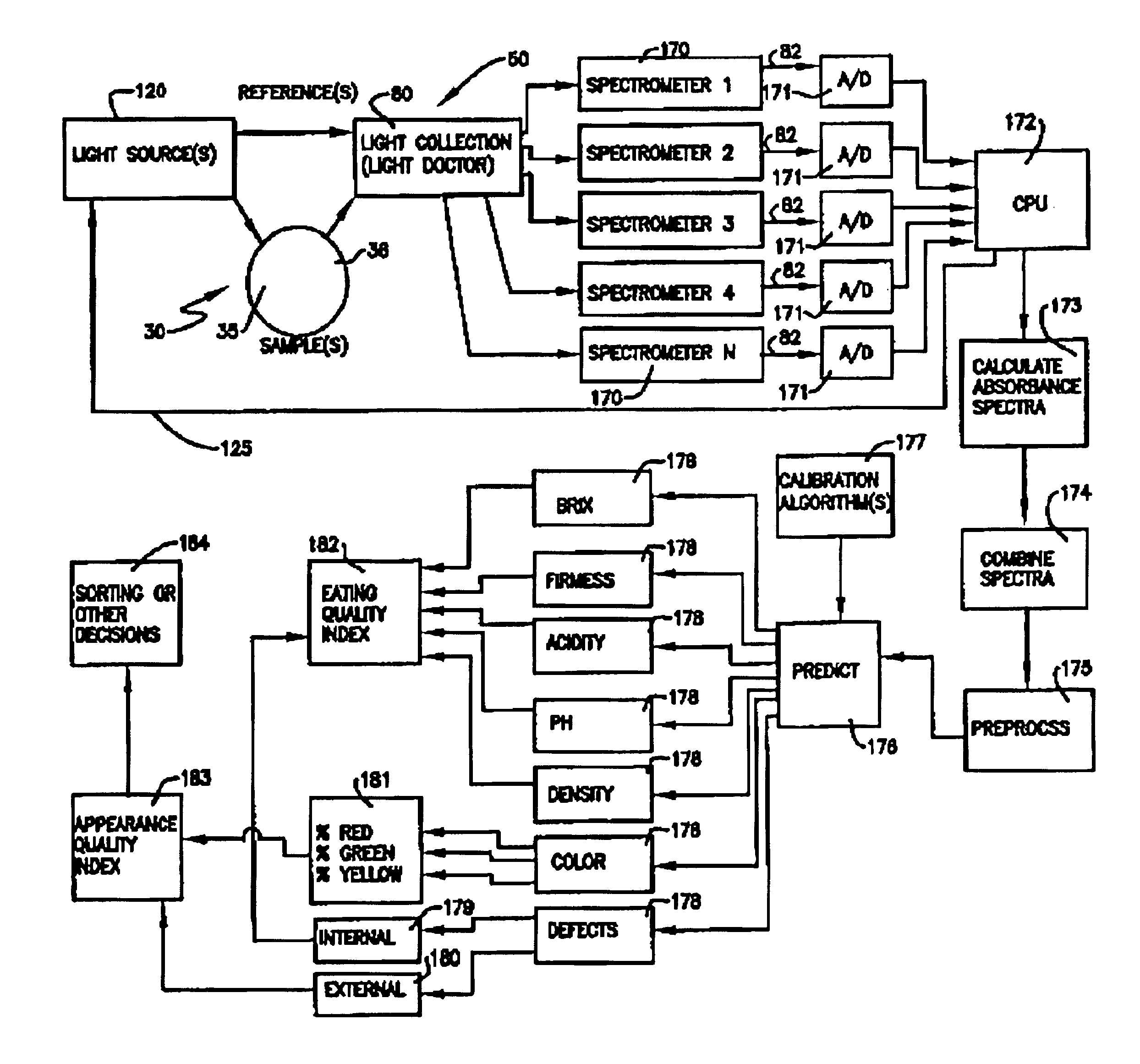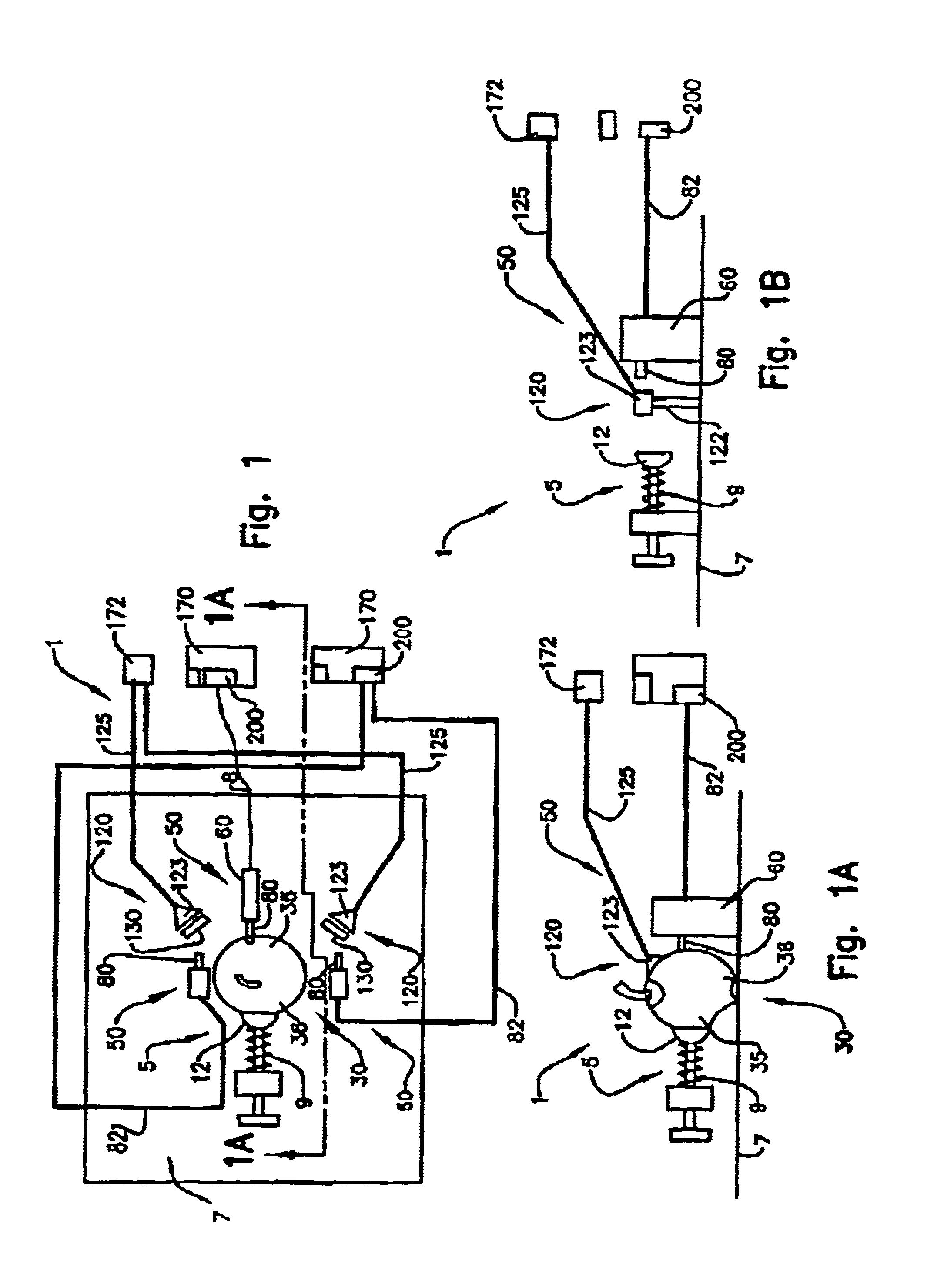Apparatus and method and techniques for measuring and correlating characteristics of fruit with visible/near infra-red spectrum
a technology of infra-red spectrum and applicator, which is applied in the direction of optical radiation measurement, instruments, corona discharge, etc., can solve the problems of unsatisfactory signal-to-noise ratio, inability to gain additional information, and difficulty in gaining additional information, so as to improve brix prediction accuracy, short exposure time, and good signal-to-noise ratio
- Summary
- Abstract
- Description
- Claims
- Application Information
AI Technical Summary
Benefits of technology
Problems solved by technology
Method used
Image
Examples
Embodiment Construction
>[0072]FIG. 9 is an elevation depicting an additional embodiment of the invention demonstrating at least one light detector 80 having an output 82 to a spectrometer 170 having a detector 200.
[0073]FIG. 10 illustrates using spectroscopic sensors for measuring fruits and vegetables while in motion on a sample conveyor 295. Shown is a sample 30 with proximity sensing means 340. Demonstrated is the sample conveyor 295, a case 250, collimating lens 78.
[0074]FIG. 10A is a section from FIG. 10 illustrating the proximity sensing means 340 in the form of reflectance means.
[0075]FIG. 11 illustrates the manner of taking a reference measurement of the light source 120 lamp(s) 123 where intensity vs. wavelength output can also be obtained using reflecting means 360.
[0076]FIGS. 12 and 13 illustrate the mechanical insertion of reference means 430 in or near the location where actual sample 30 is normally measured. Insertion is by insertion means including but not limited to an actuator system 400....
PUM
 Login to View More
Login to View More Abstract
Description
Claims
Application Information
 Login to View More
Login to View More - R&D
- Intellectual Property
- Life Sciences
- Materials
- Tech Scout
- Unparalleled Data Quality
- Higher Quality Content
- 60% Fewer Hallucinations
Browse by: Latest US Patents, China's latest patents, Technical Efficacy Thesaurus, Application Domain, Technology Topic, Popular Technical Reports.
© 2025 PatSnap. All rights reserved.Legal|Privacy policy|Modern Slavery Act Transparency Statement|Sitemap|About US| Contact US: help@patsnap.com



